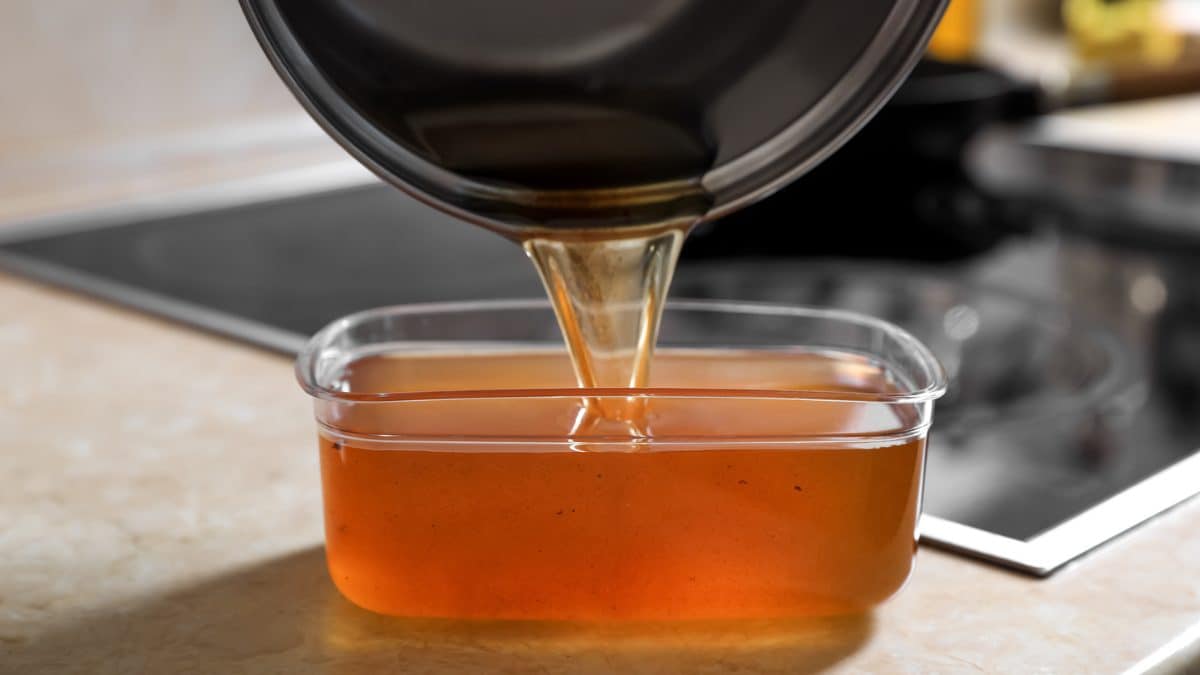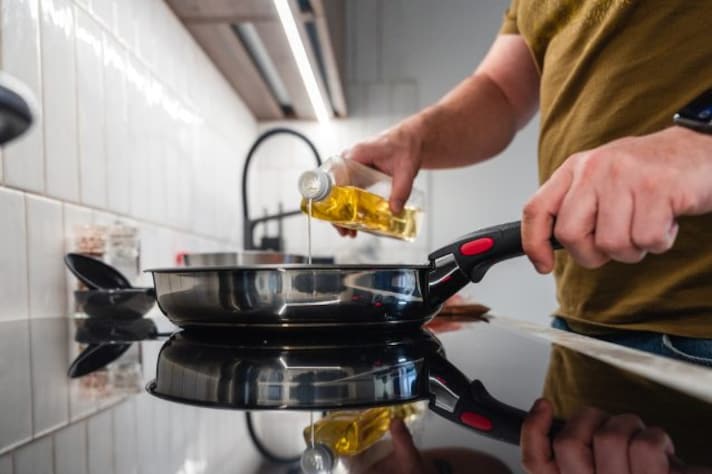
You’ve fried chicken, crisped potatoes, or maybe tested your hand at homemade donuts. What’s left behind? A pan full of golden oil that seems too expensive—or too wasteful—to pour down the drain. The temptation is strong: why not strain it and use it again? After all, our grandparents did it. But reheating used cooking oil isn’t just a thrifty habit gone mainstream—it’s a kitchen shortcut with consequences that can affect both flavor and health.
Stale Oil Means Stale Food
Fresh oil is like a clean canvas—it lets ingredients shine, adding crispness without overpowering flavor. Used oil, though, carries the ghosts of dinners past. Fry fish once, and the next batch of fries comes out with a faint—but unmistakable—oceanic perfume. Beyond unwanted cross-flavors, reheated oil loses the ability to crisp food properly. Instead of a light crunch, you often get limp, greasy results. Think of it as painting over a dirty canvas: no matter how skilled the hand, the end result looks (and tastes) muddied.
The Smoke Point Drops Faster Than You Think
Every cooking oil has a smoke point—the temperature at which it begins to break down and release visible smoke. Fresh oil might let you fry at 375°F without trouble, but once it’s been heated, cooled, and reheated, that smoke point lowers dramatically. The result? Oil that smokes before your food is cooked, filling your kitchen with bitter fumes and lending a burnt undertone to every bite. It’s not just annoying—it’s a chemical sign that the oil is degrading.

Oxidation: When Oil Turns Against Itself
Here’s where science slides into the skillet. Each time oil is heated, it reacts with oxygen in the air, a process called oxidation. That reaction changes the oil’s structure, creating compounds that aren’t just unpleasant in flavor—they can be harmful in the long run. Some of these byproducts contribute to rancidity, while others have been linked to inflammation when consumed regularly. Translation? Reheated oil may look innocent, but it carries more baggage than you bargained for.
The Free Radical Frenzy
Cooking oil that’s been reheated repeatedly doesn’t just oxidize—it can produce unstable molecules known as free radicals. These little troublemakers are linked with cellular stress, which experts associate with a host of chronic issues. While one basket of fries isn’t going to rewrite your health story, making reheated oil a habit is where concern creeps in. It’s a case of small choices adding up over time, in ways that don’t serve your body—or your taste buds.
Why Restaurants Get Away With It (and You Shouldn’t)
If restaurants reuse oil, why shouldn’t you? The short answer: they manage it differently. Commercial fryers filter and replace oil frequently, keeping degradation in check. At home, most of us don’t have that system. We heat oil in a shallow pan, let it cool in the same pot, and reuse it days later. By then, the oil’s chemistry has shifted in ways that make it far riskier than what a fry shack cycles through in a single evening.

The Kitchen Mess Factor
Beyond the science, there’s the sheer mess of dealing with reheated oil. It splatters more, foams unpredictably, and coats food unevenly. Instead of golden brown, your chicken may come out patchy, with greasy spots that scream “leftovers.” The clean-up is just as bad: sticky residue clings to pans, stovetops, and utensils, turning frying into a chore rather than a joy.
How to Cook Without Waste
Throwing away oil after one use feels wasteful, but there are better ways to approach the problem. For light sautéing or shallow frying, use smaller amounts of oil so less goes to waste. For deep frying, choose oils with higher smoke points (like peanut or canola), but commit to a single use when quality matters most. And instead of pouring oil down the drain—please don’t—strain and cool it, then dispose of it in the trash or find a local recycling program that repurposes cooking oil into biofuel.
;Resize,width=767;)
